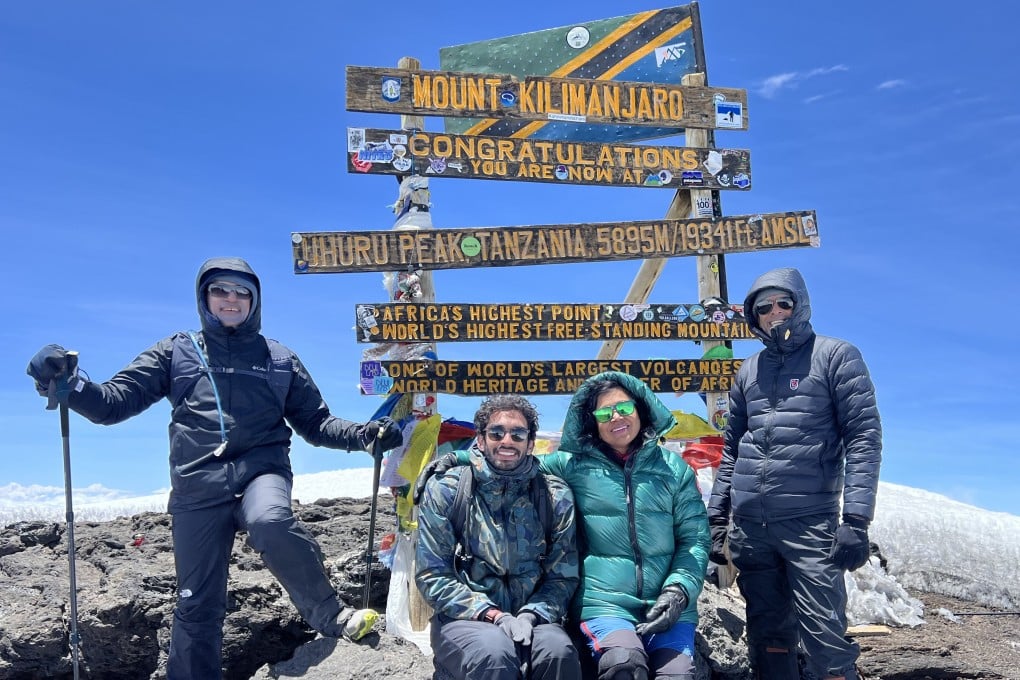How climbing Mount Kilimanjaro brought 4 Hong Kong friends closer together
- Trio in their 50s and a son, 27, from Hong Kong challenge themselves with 8-day climb to top of Africa’s highest peak in wind, rain and cold

Exhaustion gave way to elation for Hong Kong residents Jaya Kumra, Seshu Krishna Anne and Hozefa Topiwalla after six days of gruelling uphill trekking.
The friends took in the spectacular views from Uhuru Peak, the highest point in Africa at 5,895 metres (19,341 feet) above sea level, as the realisation of their accomplishment began to sink in: they had summited Mount Kilimanjaro in Tanzania.
It is the world’s highest free-standing mountain and known as the roof of Africa. It is also the most popular of the Seven Summits, the highest peaks on the seven traditional continents. Each year, 30,000 to 50,000 hikers attempt the climb.
What inspired this adventure

“Last year I thought, why not give it a go for my 52nd birthday?”
The adrenaline rush and excitement of climbing and reaching a peak drives her, as does a challenge that pushes her outside her comfort zone.
Hozefa Topiwalla, 52, is always on the lookout for a challenge. When Anne asked him to join, the finance executive and fitness enthusiast saw it as “the perfect opportunity to push myself”.
